The Arrival
During World War II, while many focused on the soldiers at the frontlines, a group of women of color fought a different battle. The 6888th Central Postal Directory Battalion, known as the “Six Triple Eight,” joined the fight to fix a three-year backlog of undelivered mail. In February 1945, the first contingent of this battalion set sail on the Ile de France (with the second contingent arriving two months later). Stealthy German U-boats littered the vast ocean. Upon their arrival in Scotland, the contingent was greeted by the explosion of a German V-1 rocket, forcing them to run for cover.
The Reason
As part of the Six Triple Eight, 855 women of color joined the war effort. They were given the task of sorting 17 million pieces of mail from the families of soldiers. Without an efficient mail system, the soldiers did not receive their letters from home and, as a result, began to give up and lose hope. Many families also did not receive letters from the front, leaving them concerned for the soldiers’ safety. The Six Triple Eight was tasked with handling this backlog of mail. This may not seem so important now, but at that time, there were no computers to email loved ones. Letters were the only way soldiers could stay connected with their families back home.
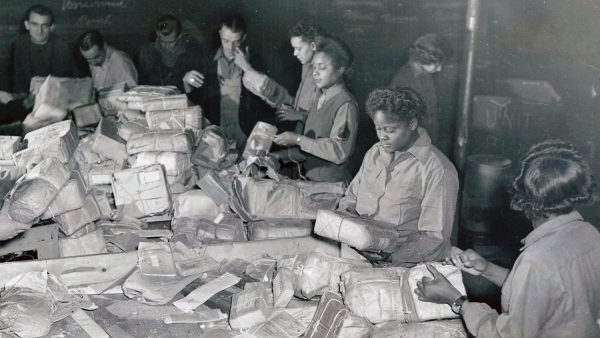
The Challenges
While trying to complete this daunting task, the women of the Six Triple Eight had to work in horrible conditions. While white soldiers were given nice, comfortable beds, meals, and warm clothing, the women weren’t so lucky. The battalion was stationed at King Edward’s School in Edgbaston, England. The school needed to be transformed not only into their workplace but also into their home. The women also faced misogyny from the male soldiers.
Additionally, the women had to work long, cold shifts. The hangars where they sorted mail were unheated, and rats lived in the packages. They also had to work in the dark to avoid being spotted by enemies. Even though these women were not on the front lines, they were still battle-ready. They were trained to crawl under logs, jump over trenches, march with rucksacks, and know the difference between an American Winchester M12 shotgun and a German Karabiner 98b rifle.
Despite all these challenges, the women succeeded. They were told they had to complete the task of sorting the mail within six months, but they finished in three.
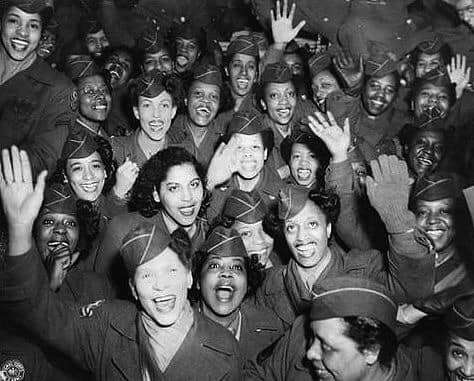
Fun Facts about the 6888
- The Six Triple Eight was the first and only all-female African American battalion to be deployed overseas during World War II. This group also consisted of Hispanic and Puerto Rican women.
- Their motto was “no mail, low morale.”
- A lot of the soldiers had common nicknames like Junior, Buster, or Robert Smith, making the task of sorting mail way more difficult than it needed to be.
- During one infamous encounter, Maj. Adams stopped a male general from inspecting the private rooms where some of the women were sleeping. The general berated Maj. Adams for some of the absences of the troops. However, they had a good reason for not being there—the women worked 24 hours, with three eight-hour shifts a day. The outraged general interrupted her, threatening to send a white superior officer to show her how to do the job she had already been capable of doing. Adams replied, “Over my dead body, sir.”
- In early July of 1945, a jeep accident took the lives of Privates Mary Bankston and Mary Barlow. A month later, Sgt. Dolores M. Browne succumbed to injuries from the accident. The War Department did not want to pay for their funerals, so the Six Triple Eight chose to honor their fallen sisters by paying for their burial at Normandy American Cemetery with their own money.
- When the women of the Six Triple Eight returned from their mission, no one knew what they had accomplished because the War Department wanted to keep it a secret. The women received no praise for their work and were told not to speak about it at home. These women were not honored until 2022 and are considered the secret heroes of World War II.
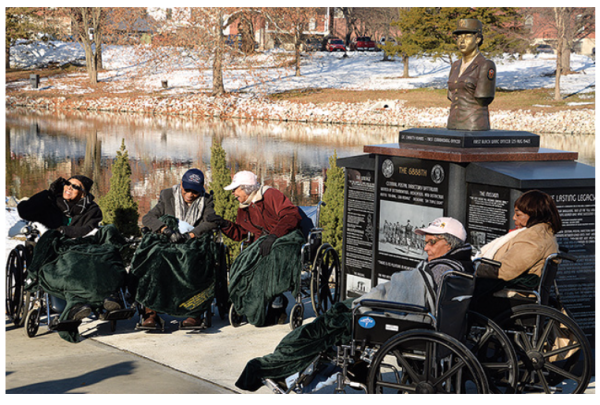
The Movie
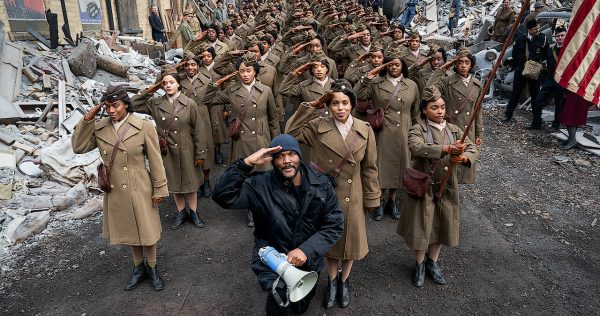
In 2024, the story of the Six Triple Eight was brought to the big screen with the release of the film The Six Triple Eight. Directed by Tyler Perry, the movie showed the extraordinary efforts of these women during World War II. It was released on Netflix, starring Kerry Washington, Oprah Winfrey, and Ebony Obsidian. This film helped shine a light on these women’s stories. However, the movie does include some inaccuracies and differences compared to the real-life events of the Six Triple Eight.
Inaccuracies and Differences:
- The salute: The film shows the battalion receiving a salute, but this didn’t happen until years after the war.
- The death of three soldiers: The film shows two soldiers dying in a truck explosion, but three soldiers actually died in a jeep accident.
- General Halt: The fictional character General Halt is not based on a real person.
- The love story: Some say the movie’s love story is unnecessary and takes away from the focus on the Black and brown women of the battalion.
Recognition
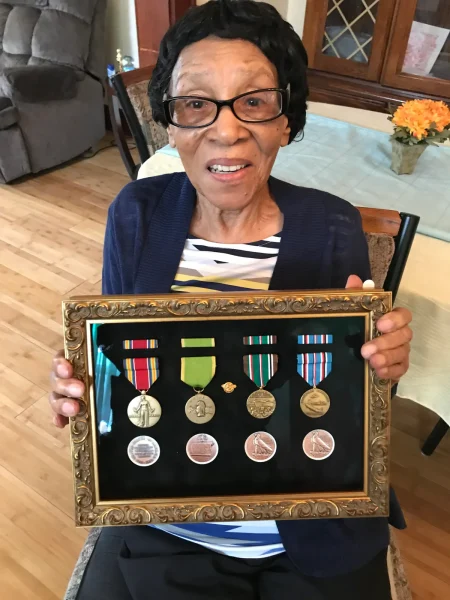
On February 28, 2022, the House of Representatives voted unanimously to award the Congressional Gold Medal to the Six Triple Eight; the Senate approved the award in 2021. Other commemorations and honors include a 2009 Army commendation ceremony at the Military Women’s Memorial at Arlington National Cemetery.
The Six Triple Eight proved that no role was too small during World War II.
Works Cited:
- today.com.
- “what is the true story behind tryler perry’s the six triple eight.” today.com, lindsey lowe and candice williams, 20 december 2024, https://www.today.com/popculture/movies/the-six-triple-eight-true-story-rcna184341.
- https://newsroom.woundedwarriorproject.org/The-Six-Triple-Eight-Proved-That-No-Role-Was-Too-Small-During-World-War-II
- https://www.armyupress.army.mil/Journals/Military-Review/English-Edition-Archives/Jan-Feb-2019/Warrington-Mail/




















